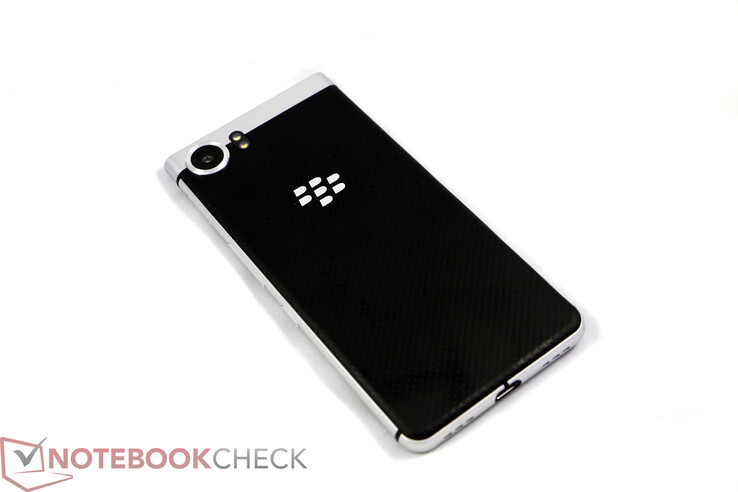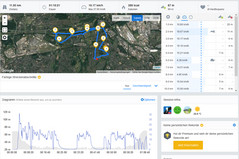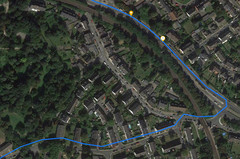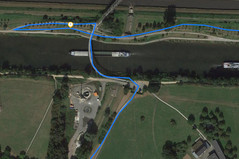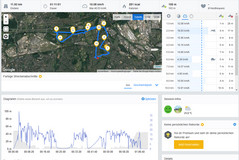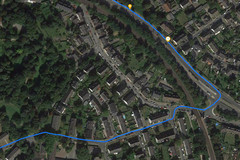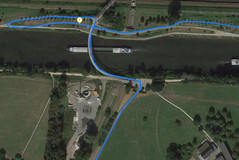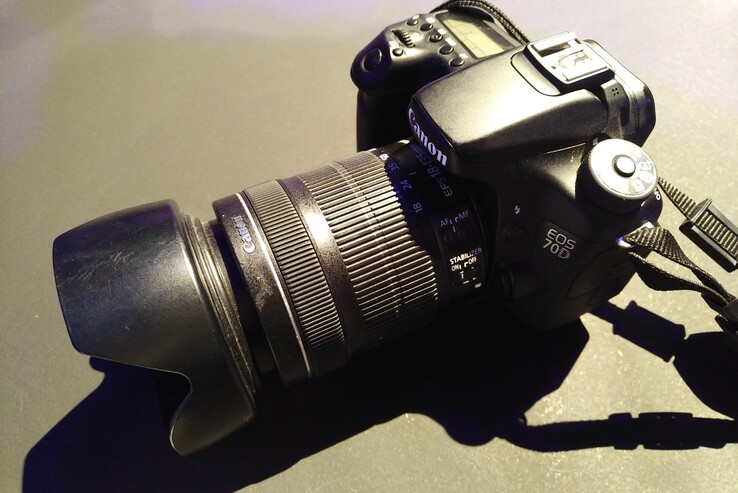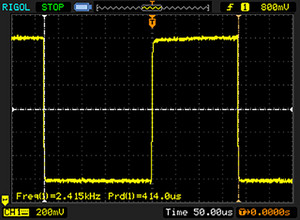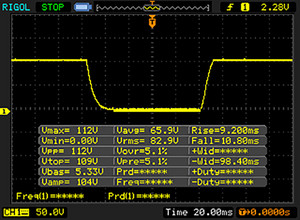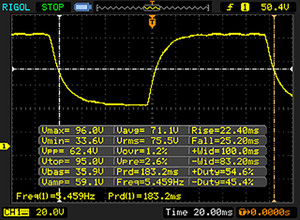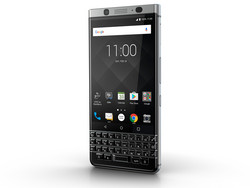黑莓 KEYone 智能手机简短评测
» Notebookcheck多媒体笔记本电脑Top 10排名
» Notebookcheck游戏笔记本电脑Top 10排名
» Notebookcheck低价办公/商务笔记本电脑Top 10排名
» Notebookcheck高端办公/商务笔记本电脑Top 10排名
» Notebookcheck工作站笔记本电脑Top 10排名
» Notebookcheck亚笔记本电脑Top 10排名
» Notebookcheck超级本产品Top 10排名
» Notebookcheck变形本产品Top 10排名
» Notebookcheck平板电脑Top 10排名
» Notebookcheck智能手机Top 10排名
» Notebookcheck评测过最出色的笔记本电脑屏幕
» Notebookcheck售价500欧元以下笔记本电脑Top 10排名
» Notebookcheck售价300欧元以下笔记本电脑Top 10排名
| Networking | |
| iperf3 transmit AX12 | |
| Samsung Galaxy S8 (Linksys EA8500) | |
| Apple iPhone 7 (Klaus I211) | |
| BlackBerry KeyOne (Linksys EA8500, 5.0 GHz) | |
| BlackBerry DTEK60 (Linksys EA8500, 5.0 GHz) | |
| iperf3 receive AX12 | |
| Apple iPhone 7 (Klaus I211) | |
| BlackBerry KeyOne (Linksys EA8500, 5.0 GHz) | |
| Samsung Galaxy S8 (Linksys EA8500) | |
| BlackBerry DTEK60 (Linksys EA8500, 5.0 GHz) | |
| |||||||||||||||||||||||||
Brightness Distribution: 89 %
Center on Battery: 641 cd/m²
Contrast: 1885:1 (Black: 0.34 cd/m²)
ΔE ColorChecker Calman: 4.7 | ∀{0.5-29.43 Ø4.78}
ΔE Greyscale Calman: 5.9 | ∀{0.09-98 Ø5}
Gamma: 2.22
CCT: 7785 K
Screen Flickering / PWM (Pulse-Width Modulation)
| Screen flickering / PWM detected | 2415 Hz | ≤ 1 % brightness setting | |
The display backlight flickers at 2415 Hz (worst case, e.g., utilizing PWM) Flickering detected at a brightness setting of 1 % and below. There should be no flickering or PWM above this brightness setting. The frequency of 2415 Hz is quite high, so most users sensitive to PWM should not notice any flickering. In comparison: 53 % of all tested devices do not use PWM to dim the display. If PWM was detected, an average of 8111 (minimum: 5 - maximum: 343500) Hz was measured. | |||
Display Response Times
| ↔ Response Time Black to White | ||
|---|---|---|
| 20 ms ... rise ↗ and fall ↘ combined | ↗ 9.2 ms rise | |
| ↘ 10.8 ms fall | ||
| The screen shows good response rates in our tests, but may be too slow for competitive gamers. In comparison, all tested devices range from 0.1 (minimum) to 240 (maximum) ms. » 42 % of all devices are better. This means that the measured response time is similar to the average of all tested devices (20.2 ms). | ||
| ↔ Response Time 50% Grey to 80% Grey | ||
| 47.6 ms ... rise ↗ and fall ↘ combined | ↗ 22.4 ms rise | |
| ↘ 25.2 ms fall | ||
| The screen shows slow response rates in our tests and will be unsatisfactory for gamers. In comparison, all tested devices range from 0.165 (minimum) to 636 (maximum) ms. » 81 % of all devices are better. This means that the measured response time is worse than the average of all tested devices (31.6 ms). | ||
| AnTuTu v6 - Total Score (sort by value) | |
| BlackBerry KeyOne | |
| Huawei Mate 9 | |
| BlackBerry DTEK60 | |
| Apple iPhone 7 | |
| Asus Zenfone 3 ZE552KL | |
| Lenovo P2 | |
| Lenovo Moto Z Play | |
| Samsung Galaxy S7 | |
| Mozilla Kraken 1.1 - Total (sort by value) | |
| BlackBerry KeyOne | |
| BlackBerry DTEK60 | |
| Apple iPhone 7 | |
| Asus Zenfone 3 ZE552KL | |
| Lenovo Moto Z Play | |
| Samsung Galaxy S8 | |
| Honor 8 | |
| Octane V2 - Total Score (sort by value) | |
| BlackBerry KeyOne | |
| BlackBerry DTEK60 | |
| Apple iPhone 7 | |
| Asus Zenfone 3 ZE552KL | |
| Lenovo Moto Z Play | |
| Samsung Galaxy S8 | |
| Honor 8 | |
| WebXPRT 2015 - Overall (sort by value) | |
| BlackBerry KeyOne | |
| BlackBerry DTEK60 | |
| Apple iPhone 7 | |
| Asus Zenfone 3 ZE552KL | |
| Lenovo Moto Z Play | |
| Samsung Galaxy S8 | |
| Honor 8 | |
| JetStream 1.1 - Total Score (sort by value) | |
| BlackBerry KeyOne | |
| BlackBerry DTEK60 | |
| Apple iPhone 7 | |
| Asus Zenfone 3 ZE552KL | |
| Lenovo Moto Z Play | |
| Samsung Galaxy S8 | |
| Honor 8 | |
* ... smaller is better
| Asphalt 8: Airborne | |||
| Settings | Value | ||
| high | 30 fps | ||
| very low | 30 fps | ||
| Dead Trigger 2 | |||
| Settings | Value | ||
| high | 30 fps | ||
(+) The maximum temperature on the upper side is 37.8 °C / 100 F, compared to the average of 35.2 °C / 95 F, ranging from 21.9 to 247 °C for the class Smartphone.
(+) The bottom heats up to a maximum of 39.6 °C / 103 F, compared to the average of 34 °C / 93 F
(±) In idle usage, the average temperature for the upper side is 32.8 °C / 91 F, compared to the device average of 32.9 °C / 91 F.
BlackBerry KeyOne audio analysis
(±) | speaker loudness is average but good (80 dB)
Bass 100 - 315 Hz
(-) | nearly no bass - on average 16.3% lower than median
(±) | linearity of bass is average (11.4% delta to prev. frequency)
Mids 400 - 2000 Hz
(±) | higher mids - on average 8.4% higher than median
(±) | linearity of mids is average (8.8% delta to prev. frequency)
Highs 2 - 16 kHz
(±) | higher highs - on average 5.6% higher than median
(±) | linearity of highs is average (9.1% delta to prev. frequency)
Overall 100 - 16.000 Hz
(±) | linearity of overall sound is average (27.2% difference to median)
Compared to same class
» 70% of all tested devices in this class were better, 6% similar, 24% worse
» The best had a delta of 11%, average was 35%, worst was 134%
Compared to all devices tested
» 83% of all tested devices were better, 4% similar, 14% worse
» The best had a delta of 4%, average was 24%, worst was 134%
BlackBerry DTEK60 audio analysis
(+) | speakers can play relatively loud (84.4 dB)
Bass 100 - 315 Hz
(-) | nearly no bass - on average 21.5% lower than median
(±) | linearity of bass is average (8.6% delta to prev. frequency)
Mids 400 - 2000 Hz
(±) | higher mids - on average 5.4% higher than median
(+) | mids are linear (5.8% delta to prev. frequency)
Highs 2 - 16 kHz
(±) | higher highs - on average 6.5% higher than median
(+) | highs are linear (5.2% delta to prev. frequency)
Overall 100 - 16.000 Hz
(±) | linearity of overall sound is average (22% difference to median)
Compared to same class
» 45% of all tested devices in this class were better, 7% similar, 48% worse
» The best had a delta of 11%, average was 35%, worst was 134%
Compared to all devices tested
» 63% of all tested devices were better, 7% similar, 31% worse
» The best had a delta of 4%, average was 24%, worst was 134%
Samsung Galaxy S8 audio analysis
(+) | speakers can play relatively loud (82.4 dB)
Bass 100 - 315 Hz
(-) | nearly no bass - on average 22.1% lower than median
(±) | linearity of bass is average (11.7% delta to prev. frequency)
Mids 400 - 2000 Hz
(±) | higher mids - on average 5% higher than median
(+) | mids are linear (4.3% delta to prev. frequency)
Highs 2 - 16 kHz
(+) | balanced highs - only 3.7% away from median
(+) | highs are linear (6.7% delta to prev. frequency)
Overall 100 - 16.000 Hz
(±) | linearity of overall sound is average (21.8% difference to median)
Compared to same class
» 44% of all tested devices in this class were better, 8% similar, 48% worse
» The best had a delta of 11%, average was 35%, worst was 134%
Compared to all devices tested
» 61% of all tested devices were better, 7% similar, 32% worse
» The best had a delta of 4%, average was 24%, worst was 134%
| Off / Standby | |
| Idle | |
| Load |
|
Key:
min: | |
| BlackBerry KeyOne 3505 mAh | BlackBerry DTEK60 3000 mAh | Apple iPhone 7 1960 mAh | Samsung Galaxy S8 3000 mAh | Honor 8 3000 mAh | |
|---|---|---|---|---|---|
| Power Consumption | -25% | 9% | 9% | -18% | |
| Idle Minimum * (Watt) | 0.89 | 0.7 21% | 0.54 39% | 0.78 12% | 0.78 12% |
| Idle Average * (Watt) | 1.81 | 1.13 38% | 1.51 17% | 1.1 39% | 1.89 -4% |
| Idle Maximum * (Watt) | 1.83 | 1.2 34% | 1.54 16% | 1.16 37% | 2.02 -10% |
| Load Average * (Watt) | 3 | 6.52 -117% | 3.75 -25% | 4.15 -38% | 5.28 -76% |
| Load Maximum * (Watt) | 4.91 | 9.75 -99% | 5.01 -2% | 5.12 -4% | 5.44 -11% |
* ... smaller is better
| BlackBerry KeyOne 3505 mAh | Lenovo Moto Z Play 3510 mAh | Huawei Mate 9 4000 mAh | Asus Zenfone 3 ZE552KL 3000 mAh | |
|---|---|---|---|---|
| Battery runtime | 70% | 5% | 17% | |
| Reader / Idle (h) | 27.5 | 42.3 54% | 25.6 -7% | 25 -9% |
| H.264 (h) | 12.6 | 19.8 57% | 15.8 25% | 15.1 20% |
| WiFi v1.3 (h) | 10.4 | 13.7 32% | 12.6 21% | 13.3 28% |
| Load (h) | 4.6 | 10.9 137% | 3.7 -20% | 5.9 28% |
Pros
Cons
能够在市面上见到带有实体键盘的新款手机是一件好事。充实的安全功能以及出色的电池续航时间是黑莓 KEYone最大的优势。其他优点在于屏幕的高亮度以及很多出色的输入选项包括有着附加功能的实体键盘。
但是,考虑到SoC的选择(Snapdragon 625)以及仅仅 3GB 的内存,550美元的价格有一些太高了。考虑到价格因素,仅有LTE cat.6对于一台商务设备来说有些令人失望。它的LTE网络无法在全球使用,因为其LTE网络被限制的当地所使用的频段中。其相机和其性能一样,都只是中等水平。
黑莓 KEYone是一台出色但是昂贵的设备,特别是对于那些喜欢实体键盘或是那些看重安全功能的用户。我们应该感谢TCL所付出的努力,特别是在创造一台有着如此多输入选项的实体键盘的手机同时保持黑莓手机的安全功能。
如果你喜欢实体键盘并希望有一台安全的Android设备,也许你应该考虑黑莓 KEYone。你肯定会因为这台不同寻常的设备而脱颖而出。
注:本文是基于完整评测的缩减版本,阅读完整的英文评测,请点击这里。




